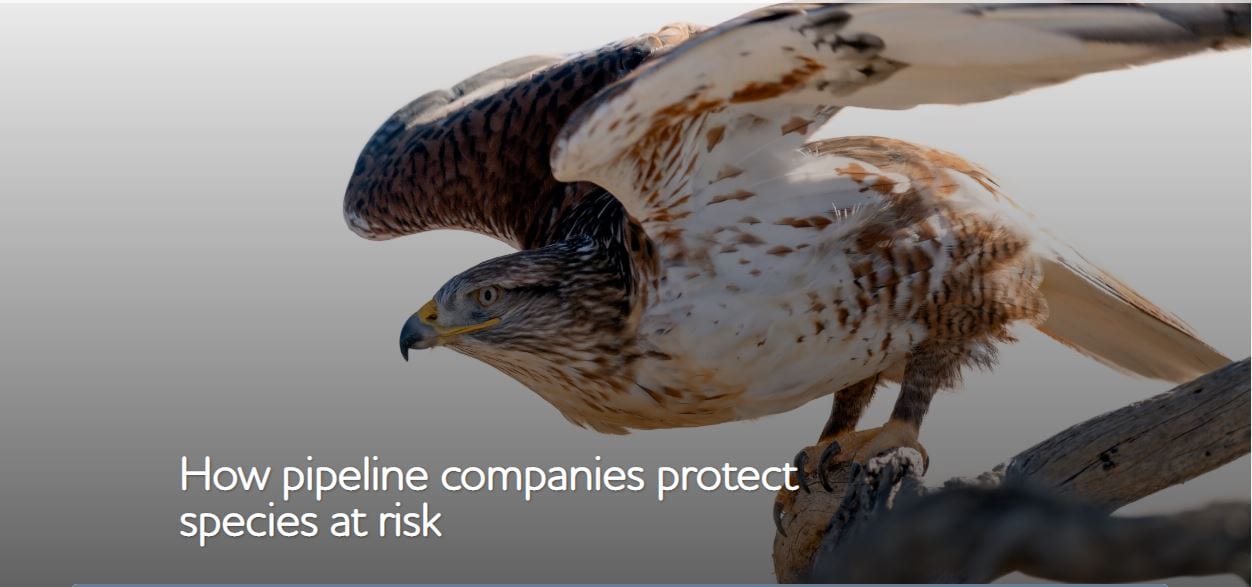Migration and habitats are critical considerations for pipeline design. With approximately 2.5 million miles of transmission pipelines crossing the U.S., construction and maintenance activities could affect animal habitats from time to time. That’s why animal habitats and migration patterns are factored into the earliest planning and design stages for pipeline projects, right through the construction phase and throughout the life-cycle of the pipeline.
For some highly sensitive species, such as caribou and grizzly bears, regulators require projects to submit “species-specific” plans that fully describe all mitigation and monitoring measures. The projects start by using government data to identify potential species at risk habitats along the pipeline route. The routes are then refined wherever possible to avoid those habitats. Wildlife sweeps and surveys can also be conducted to ensure that there is no active nesting or young in the area prior to any crews, equipment, or vehicles being mobilized to the site.
However, it doesn’t stop there: after construction, great effort is put into returning the land around the site to its natural state. Topsoil is saved separately from subsoil so that the layers of soil can be restored as closely as possible, and vegetation is replanted. Submar’s articulated concrete revetment mats play a pivotal role in helping native vegetation to thrive.
Many pipeline companies often take actions to minimize their impacts on habitats even where there is no regulatory requirement. They use all the information available to them from government, databases, ground-truthing (environmental surveys), science, and research to identify critical habitats or other sensitive habitats so that they can take mitigation measures.
By planning construction for a particular season and committing to a tight schedule, pipeline companies are able to minimize the impact on wildlife. They are also careful to adapt disruptive features bordering the pipeline right of way that might disturb animal movements.
In addition, regulators require pipeline project proponents and operators to monitor and report on the effectiveness of their plans, including spelling out how they will adapt their measures if they’re not meeting stated objectives.


